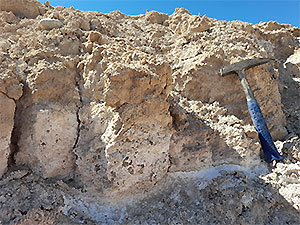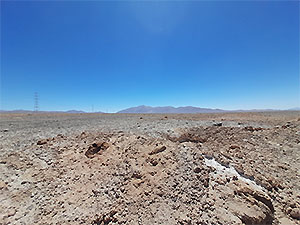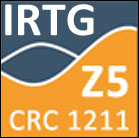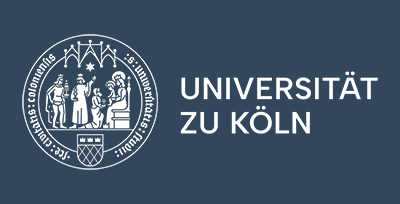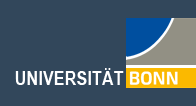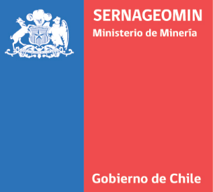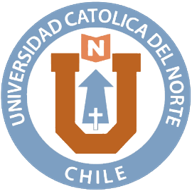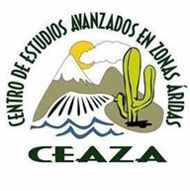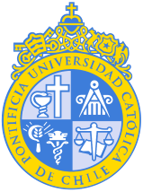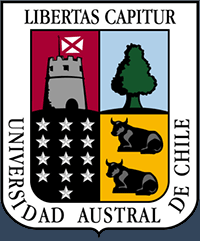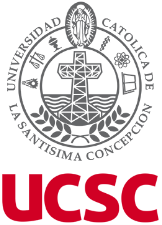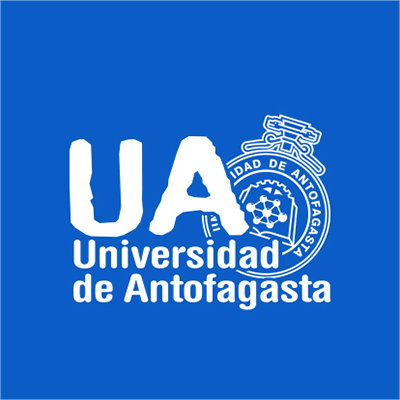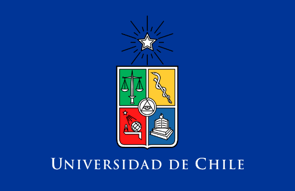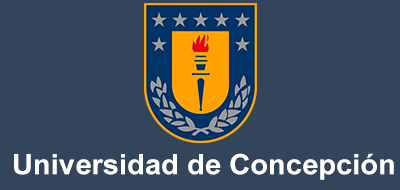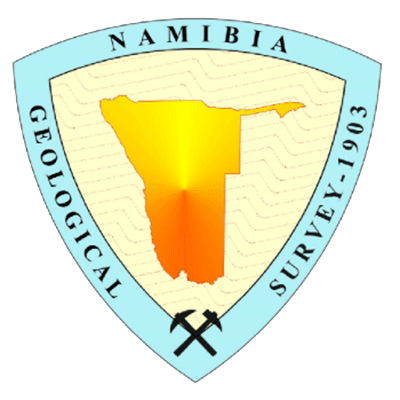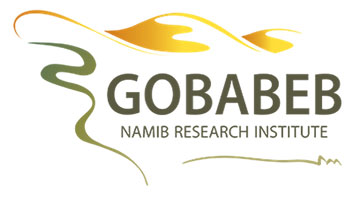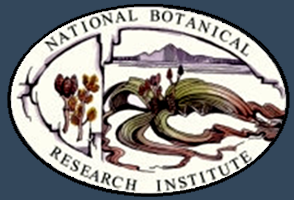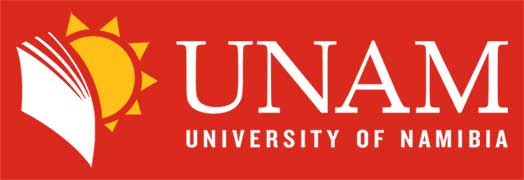The field work started in the North of "Cerro Coloso" (figure 1), at a hill in the Coast Cordillera of Antofagasta. IRTG fellowship holder Camila Riffo Contreras went on a fieldtrip to collect sample material for project D03 with two other geology students from the Universidad Católica del Norte.
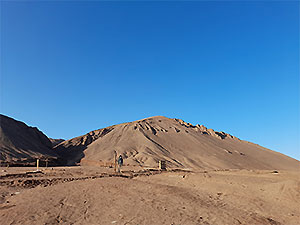 |
|
|
Figure 1: North of “Cerro Coloso” with view to the South, showing the hill in the Coast Cordillera, where first samples were taken. |
In Cerro Coloso, the sampling team took soil sample profiles at 3 different points in 4 different soil horizons, which can be described as: a surficial crust, a coarse surface, a nodule level and a white hard level with volcanic clasts. From this sampling site, Camila and the students had a beautiful view to the coast of Antofagasta from the top of the hill.
On the second day of field work, the sampling crew visited the Gypsum Mine at the "Península de Mejillones", a mine with beautiful crystals of gypsum. They took samples from all profiles at 4 different points, where they recognised 9 horizons containing 3 different gypsum forms: powdery gypsum, coarse gypsum and crystallized gypsum. In some horizons the coarse gypsum had an orange colour because of oxidation processes.
On the last day of field work, Camila and the students sampled at 3 different sampling locations at the Central Depression of North of Chile.
First sample side was located at the east side of "Posada Rosario" (figure 2), where 4 different profiles were sampled: 2 profiles were samples in old "Calicheras" profiles, where five horizons are outcropping: a surficial crust, a coarse surface, a poorly compacted level with volcanic clasts, a thenardite level and a compacted level with volcanic clasts.
The other 2 profiles were located at little hills (figure 3), where four horizons could be recognised: a surficial crust, a coarse surface, a thenardite level and a powdery level.
One sample point was in a Cinerite Horizon, where the team sampled ash from two different horizons. The last sampling point was at the east side of "Yungay", where the team sampled two different profiles from old "Calicheras", where 5 different horizons are outcropping: a surficial crust, a coarse level with andesitic clasts, a powdery sand layer, a powdery level with small crystals (sugar like) and hard halite.
Overall the team took 76 samples for the project D03, enjoying the beautiful landscape of the dessert and the sunlight. Samples were taken to investigate the distribution of salts in the Atacama Desert and the oxygen-isotope-composition from nitrates.



